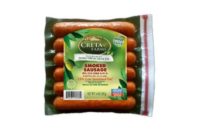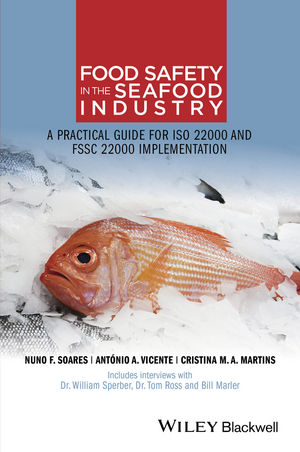A Link to Better Sausages
By Sam Gazdziak, Senior Editor
Sausage tastes and processing methods are constantly changing, and phosphates continue to adapt.
One of the key ingredients used in many sausages is not meant to be tasted. Nevertheless, phosphates remain an integral part of the sausage-making process, and there are many different types available, depending on the meat and other ingredients used.
Phosphates provide several benefits when used in sausages, says Lynn Knipe, extension processed meat specialist, Ohio State University. “They help with the stability of the product and help hold the water,” he says. “It also helps hold fat in the product a little better. This results in a juicier product with a firmer texture.”
Phosphates also help to reverse the natural process that occurs in meat after the animal is slaughtered. Lactic acids build up post mortem and deplete the natural phosphates that are in the meat system, says Larry Guerin, industry manager, meat, poultry, and seafood for Budenheim/Gallard-Schlesinger, Garden City, NY. “As the lactics take them away, the muscle contracts, gets hard and solid, and gives up moisture, making it tough and stringy,” he says. “What we try to do when we put phosphates back into that system is to recondition that protein molecule so that it will allow for the reabsorption of moisture back into it, so that it gets more to its natural state. It improves the texture and bite when you’re making sausage.”
Sausages made with an emulsion use phosphates to improve the stability, says Gene Brotsky, technical service manager for meat, seafood, and poultry for Innophos Inc., Cranbury, NJ. “[Phosphates] also thin out the emulsion, making it easier to stuff and achieve more uniform links,” he adds. “For coarse-cut sausage, phosphates solubilize proteins that improve moisture binding and avoid greasing-out problems.”
Phosphate blends and varieties
There are 11 types of phosphates that are approved by the USDA Food Safety and Inspection Service (FSIS) for use in meat products, and each one is different from the rest — and each will be used in different applications within the meat industry. Depending on the use, a phosphate that is more soluble or one that has a higher pH may be preferred. Knipe says that sausage processors have other options as well. “Phosphate companies have actually moved toward blends that are designed specifically for sausage products versus whole muscle products.”
Choosing the correct phosphate for a particular application is important, says Jim Anderson, technical manager for BK Giulini Corp., Simi Valley, CA. “Rather than a typical sodium tripolyphosphate (STP), which marginally improves sausage characteristics, a specialty phosphate with a high level of Di or Pyro content that is faster-acting and more pH-friendly while providing a cleaner flavor development would be desired,” he says. “This specialty phosphate not only is a superior-performing phosphate, but it will facilitate more advanced processing techniques, thereby improving the sausage product even more.”
With all the varieties of phosphates and blends available, manufacturers need to carefully choose the right additive for their products. The right formulation should also be process-friendly, says Heidolph. “Ideally, you want to select a phosphate that readily dissolves into water solutions, or that can be added as a powder to the chopper and still have complete dissolution,” she says. “As manufacturers select different protein sources — pork, beef, or poultry — they must also consider which phosphate is most compatible.”
For hot dog producers, highly alkaline phosphates like STP can cause rubbery texture and gray centers. “STP’s high pH extracts excessive protein and slows down cure color development, resulting in excessive binding and uncured centers,” says Brotsky. He recommends formulations that are designed to achieve the desired texture and color in completely cured hot dogs, even in a rapid, continuous frank-processing environment.
New developments
Regulations regarding the use of phosphates in sausage have been relatively consistent since the USDA allowed their use in 1982. For most of the phosphates, the level is not to exceed 0.5 percent in the product that the manufacturer sells, either in a cooked or uncooked form.
Guerin says there is a point of diminishing returns for phosphates — that once the phosphates have reconditioned the protein molecules, adding even more doesn’t have any affect. What Bodenhein has done, he relays, is work to increase the amount of pyrophosphate in their product. “When you put tripolyphosphate into a meat system, the enzymes have to break that down into a di- or pyrophosphate. If you can increase the amount of pyrophosphate that you have in your blend, then you get a much better result and a faster result than if you have to wait for the breakdown to take place with the tripoly,” he says. Two of Bodenheim’s new products for the sausage industry, Abistol 980 and Abistol 2018, have a 55% pyro content. The 980 has a pH level of 7.2, while the 2018, designed for emulsified products, has a 10 pH level. Because of the high pyro content, Guerin adds that processors can use less than the 0.5 percent maximum. “We use it at between 0.25 and 0.35 percent,” Guerin says of the Abistol 2018.
Other regulations in the food industry have the potential to affect sausage makers, says Barbara Heidolph, market development manager, food, for Astaris LLC. “One regulation would limit the level of sodium in food products that are labeled ‘healthy,’” she says. “Although this is targeted at healthy products, it had caused many food managers to look at the level of sodium that is delivered per serving of product.” For customers looking for sodium reduction, Astaris offers the new Nutrifos 100, which is sodium free.
Another new product from the company is Nutrifos BC, a salt-compatible phosphate that can be added with the spice blend directly to sausage applications.
Innophos offers new CURAFOS® OptiBind, for avoiding moisture and fat loss in sausages made from weaker binding meats such as jowls and trim. CURAFOS‚ OptiBalance achieves a good balance of yield, appearance, and flavor for a variety of sausages, the company reports. “Moreover, OptiBind and OptiBalance avoid warmed-over flavor in cooked, uncured sausages because they inhibit iron-caused oxidation,” Brotsky says.
BK Giulini Corp. has introduced a new line of potassium phosphates, says Anderson, “along with a new line of phosphate/organic ingredient blends, which have shown true synergism of ingredients, not merely compatibility.”
The future of phosphates
As new sausage products are introduced to the marketplace, new phosphate formulations will be required to meet the new demands. “It may require delivery of a different flavor, reduction of sodium, stabilization of fat in extended products, or an ideal color to appeal to the target audience,” says Astaris’ Heidolph. “Phosphates will continue to be used because they are highly functional in meat applications.”
“The future for phosphates in sausage looks bright,” adds Anderson. “The more stress that processors place on protein today the more important phosphates become. Phosphates are clearly the most functional ingredient on the actomyosin structure, period.” NP
Phosphate suppliers participating in this report include:
Astaris LLC, phone (314) 983-7500 or (800) 244-6169, fax (314) 983-7636, e-mail info@astaris.com, or visit www.astaris.com
BK Giulini Corp., (805) 581-1979 or (800) 526-2688, fax (805) 581-2139, e-mail mail@bkgiulinicorp.com, or visit www.bkgiulini.com
Budenheim/Gallard-Schlesinger, (516) 683-6900 or (800) 645-3044, fax (516) 683-6990, e-mail info@gallard.com, or visit www.gallard.com
Innophos Inc., (609) 495-2495, fax (609) 860-0138, e-mail eugene.brotsky@innophos.com, or visit www.innophos.com




Report Abusive Comment